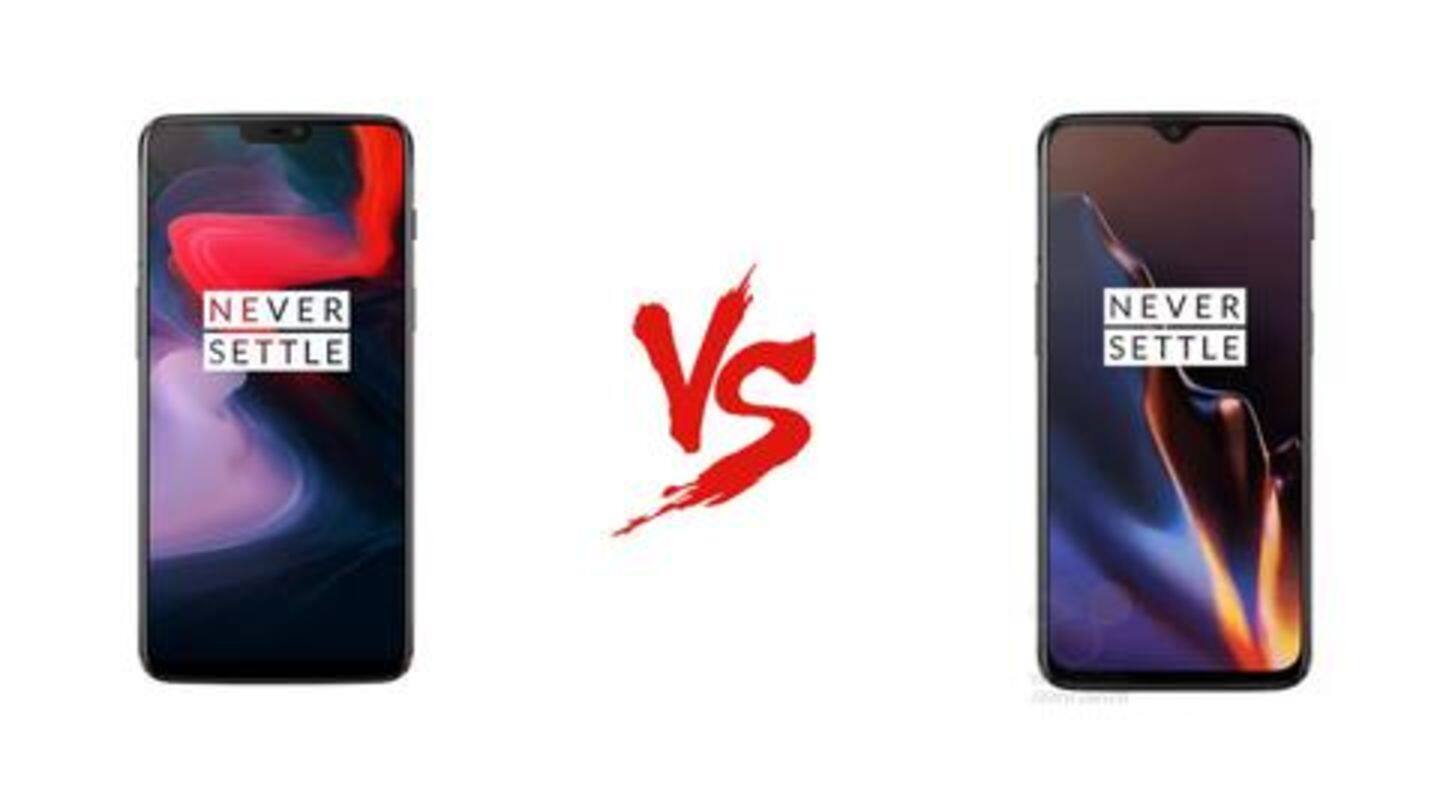
OnePlus 6T v/s OnePlus 6: What's same, and what's different?
What's the story
OnePlus 6T is all set to launch on October 29 in New York, followed by an event in India on October 30. So far, several teasers have leaked almost everything about the specifications and design of the upcoming flagship. And hence, we know that OnePlus 6T is the biggest jump between handsets that OnePlus has ever offered. But what exactly has changed?
Design
At a glance
OnePlus 6T will feature a downsized waterdrop-like notched display with a prominent bottom bezel as against the wider cut-out seen on OnePlus 6. This new display will help OnePlus 6T boast an increased screen-to-body ratio of 86% as compared to near 84% on its predecessor. Notably, on the rear, there will be a dual-camera setup but no fingerprint sensor, thanks to all-new Screen Unlock.
The biggest change
OnePlus 6T's Screen Unlock feature
OnePlus 6T will come with an optical in-display fingerprint scanner - something we've seen on a few smartphones now. The display will light up a section where you position your finger and the optical sensor will read and authenticate your fingerprint from beneath the screen. However, while this technology is slower than dedicated fingerprint readers, you can bank upon OnePlus's quick face unlock feature.
Display
All about the screen
The OnePlus 6 sports a 6.28-inch full-HD+ (1080x2280 pixels) AMOLED display with a 19:9 aspect ratio, and Gorilla Glass 5 protection. On the other hand, the OnePlus 6T will feature a bigger 6.4-inch full-HD+ (1080x2340 pixels) AMOLED screen with a taller 19.5:9 aspect ratio. Notably, OnePlus 6T's display, which houses the fingerprint scanning gadgetry, will be protected by the latest Gorilla Glass 6.
Camera
For the shutterbugs and selfie lovers
OnePlus 6T will sport a dual rear-camera setup comprising a 16-megapixel (f/1.7) main sensor, paired with a 20-megapixel (f/1.7) secondary sensor and LED flash - same as OnePlus 6. However, expect a host of new AI-based image enhancing features. Up front, the upcoming flagship will get an upgraded camera with a 20MP (f/1.7) sensor as compared to the 16MP (f/2.0) sensor on OnePlus 6.
Internals
All the important stuff
Internally, OnePlus 6T will be pretty much the same as its predecessor with the Qualcomm Snapdragon 845 processor, 6GB/8GB of RAM and 128GB/256GB of internal storage (no 64GB variant this time). Notably, it will pack a bigger 3,700mAh battery as compared to 3,300mAh battery on OnePlus 6 and support Dash Charge. Further, OnePlus 6T is unlikely to come with wireless charging.
Trade-off
OnePlus 6T won't come with a headphone jack
For a while now, OnePlus has refused to remove the headphone jack from its devices, stating that users prefer the convenience and audio quality of the port. However, with an in-display fingerprint scanner and a bigger battery, OnePlus has decided to kill the 3.5mm jack, saying "more people have Bluetooth headsets so this is not a difficult change to make".
New UX
OnePlus 6T will come with a new gesture-based UI
Recently, OnePlus confirmed the upcoming flagship will run Android Pie-based OxygenOS that will offer a refreshed UI with gesture-based navigation. According to the company, this new OxygenOS will be the most "intuitive and distinctive" version with improved camera software, an advanced Do not Disturb mode, new Navigation Gestures, and more power efficiency. However, OnePlus will eventually release this OS for OnePlus 6 as well.
Details
OnePlus 6T will be the most-expensive OnePlus smartphone ever
As per a previous leak, the OnePlus 6T base variant with 6GB RAM and 128GB storage will be priced at Rs. 37,999. The mid-end variant with 8GB RAM and 128GB internal storage will cost Rs. 40,999 while the top-end model with 8GB RAM and 256GB storage will be priced at Rs. 44,999. In comparison, OnePlus 6 starts at Rs. 34,999 for the 6GB/64GB variant.
Time will tell
OnePlus 6T v/s OnePlus 6: Make or Break
In terms of design, camera, and internals, both the phones are pretty similar. That said, with the new Screen Unlock feature, removal of the headphone jack, and increased prices, OnePlus 6T will either build on its predecessor's triumph, or it will dent the successful mix of cost-and-value that OnePlus offers. Notably, it's this lethal combination that allowed OnePlus to beat Apple and Samsung in a competitive market like India.